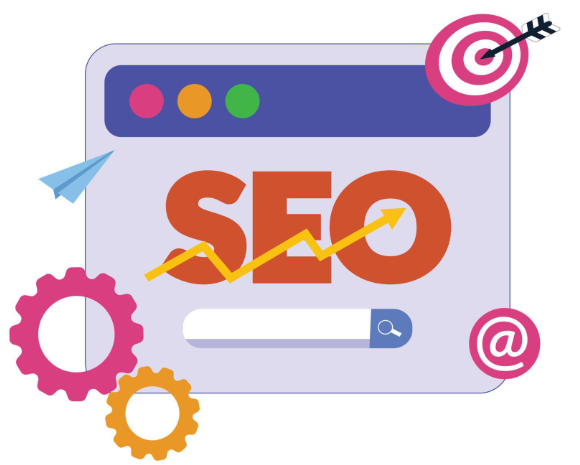SEO Optimized Logistics Websites in Dallas Fort Worth
The Digital Shift in Logistics
 The logistics industry in Dallas Fort Worth (DFW) is booming, but without a strong online presence, businesses struggle to attract and convert customers. A well-optimized logistics website can improve visibility, generate leads, and streamline operations. In this guide, we’ll cover how to create an SEO-optimized logistics website that helps your business rank higher, attract more clients, and grow sustainably.
The logistics industry in Dallas Fort Worth (DFW) is booming, but without a strong online presence, businesses struggle to attract and convert customers. A well-optimized logistics website can improve visibility, generate leads, and streamline operations. In this guide, we’ll cover how to create an SEO-optimized logistics website that helps your business rank higher, attract more clients, and grow sustainably.
1. Why SEO Matters for Logistics Websites in Dallas Fort Worth
1.1 The Competitive Landscape
DFW is a major logistics hub with companies competing for visibility. Without SEO, your website won’t appear in search results, meaning potential clients will choose your competitors instead.
1.2 How SEO Drives Business Growth
- Increases website traffic
- Attracts potential clients looking for logistics services
- Builds trust and credibility
- Generates more leads and conversions
Helps you rank for location-based searches like “best logistics services in Dallas”
2. Key SEO Strategies for Logistics Websites
2.1 Keyword Research: Finding the Right Terms
Your website must target high-intent, location-specific keywords such as:
- Best logistics company in Dallas
- Freight services in Fort Worth
- Warehouse solutions near DFW Airport
- Same-day delivery services in Texas
2.2 On-Page SEO Best Practices
- Optimize title tags, meta descriptions, and headers with targeted keywords
- Use structured data (Schema markup) for rich results
- Ensure image optimization (alt text, compressed images) for faster loading
- Internal linking to improve site navigation
2.3 Mobile Optimization
More than 60% of searches come from mobile. A mobile-friendly, responsive design ensures better rankings and user experience.
3. Website Speed & Performance for Better Rankings
3.1 Why Page Speed Matters
Google prioritizes fast-loading websites, and even a one-second delay can lower conversions by 7%.
3.2 How to Improve Website Speed
- Use lightweight themes and clean code
- Enable browser caching and compression
- Minimize HTTP requests
- Implement a Content Delivery Network (CDN)
- Optimize images using next-gen formats like WebP
4. Local SEO: Getting Found in DFW Searches
4.1 Google My Business (GMB) Optimization
- Claim and verify your Google My Business listing
- Add NAP (Name, Address, Phone) consistency
- Encourage customer reviews and ratings
- Upload high-quality business images
4.2 Local Citation Building
List your business in local directories like:
- Yelp
- Yellow Pages
- Dallas Chamber of Commerce
- Freight Brokers Association
5. Content Strategy for SEO-Optimized Logistics Websites
5.1 Blogging for Organic Traffic
Consistently publishing high-quality content keeps your website fresh. Consider writing about:
- “How to Choose a Reliable Freight Partner in Dallas”
- “Top Warehousing Solutions in Fort Worth”
- “The Future of Logistics in Texas”
5.2 Service Pages with SEO-Optimized Copy
Each service should have a dedicated, keyword-rich landing page to target different customer needs.
5.3 FAQ Section with Long-Tail Keywords
Answer common client questions to improve rankings in voice search and featured snippets.
6. Technical SEO: Ensuring a Strong Foundation
6.1 Secure Website (HTTPS)
Google prioritizes secure websites with SSL certificates.
6.2 XML Sitemap & Robots.txt
Ensure proper indexing by submitting an updated sitemap to Google Search Console.
6.3 Fix Broken Links & Redirects
Regularly audit and fix 404 errors, duplicate content, and redirect chains.
7. Conversion Rate Optimization (CRO) for More Leads
7.1 Clear Call-to-Actions (CTAs)
Use prominent buttons, forms, and click-to-call links to encourage user actions.
7.2 Live Chat & Chatbots
Increase engagement by adding a live chat feature for instant customer queries.
7.3 Trust Signals
- Display client testimonials and case studies
- Show certifications and industry partnerships
Highlight money-back guarantees or free trials
8. Tracking & Analytics for SEO Success
8.1 Google Analytics & Search Console
Monitor:
- Organic traffic trends
- User behavior and conversion rates
- Keyword rankings
8.2 Heatmaps & A/B Testing
Use heatmaps and split testing to see which pages drive the most engagement.
9. Future-Proofing Your Logistics Website for Long-Term Growth
9.1 Regular SEO Audits
Conduct monthly SEO audits to fix errors and optimize performance.
9.2 Algorithm Updates & Adaptation
Stay ahead of Google updates by keeping your SEO strategy flexible.
9.3 Ongoing Content & Link Building
Maintain rankings with fresh content, guest posting, and backlink outreach.
Conclusion: Get an SEO-Optimized Logistics Website Today!
A well-optimized logistics website is a game-changer for growth in the Dallas Fort Worth area. By implementing SEO best practices, optimizing speed, improving user experience, and leveraging local SEO, your logistics business can dominate search results and attract more customers. Investing in SEO Optimized Logistics Websites in Dallas Fort Worth is a strategic move for logistics companies aiming to dominate the local market. A well-optimized website not only boosts your online visibility but also drives targeted traffic, helping your business attract and retain more clients in the competitive DFW area. With the right SEO practices tailored to the logistics industry, your business can stand out and grow consistently in both digital and physical landscapes.